Process¶
Ideation & sketches¶
- I explored 3 basis of bio-fabricating materials using two brewery waste: liquid beer and brewery grains. With bottles from old Roulette's brews that hadn't worked, and BSG from Beerstorming, a workshop next to my place in Brussels. My biomaterials basis were Kombucha, Gelatin & Agar.
Tip
The week 06 was an introduction to Biofabricating Materials. It started with a lecture from Cecilia including recipes.
Here is a Miro board used to collect all my recipes during Fabricademy : EXPLORATIONS, including a Project area related to these tests.



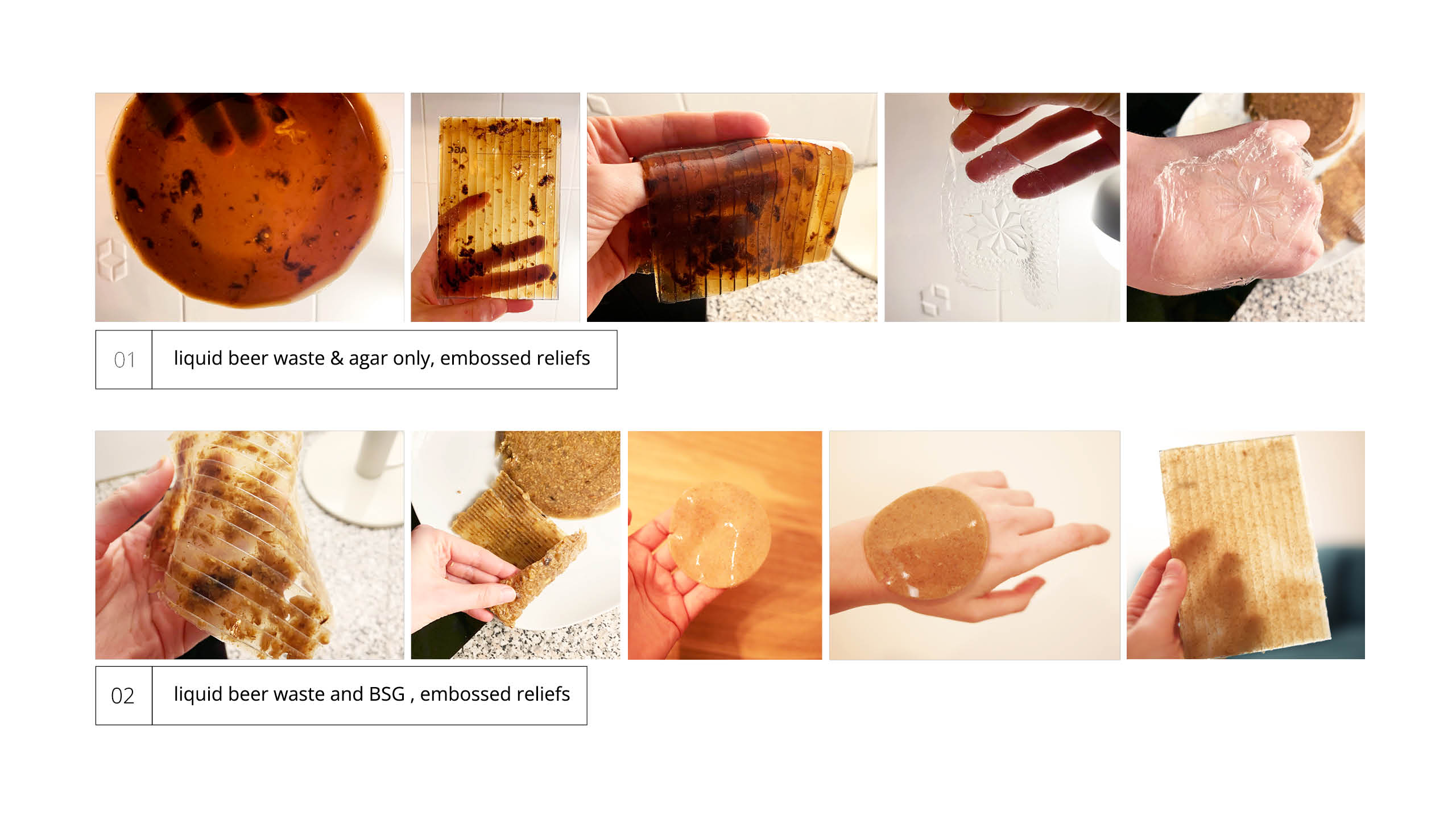
- After first iterations, I chose an Agar bio-foil basis, to produce beauty masks. Because of the stretch resistance of the foils and the fact that it was more resistant to mould than Gelatin, and that it was a non-animal material. The Kombucha option seemed very interesting to me too because it ferments well with beer, but I didn't have much time to explore then in terms of transformation before the end of the project, given the one-month deadline for obtaining a Kombucha result.
Tooling experimentations¶
- In parallel of my biomaterials research, I explored some DIY tooling solutions. To grind, dry, stack the materials & handle safely the glass plates.
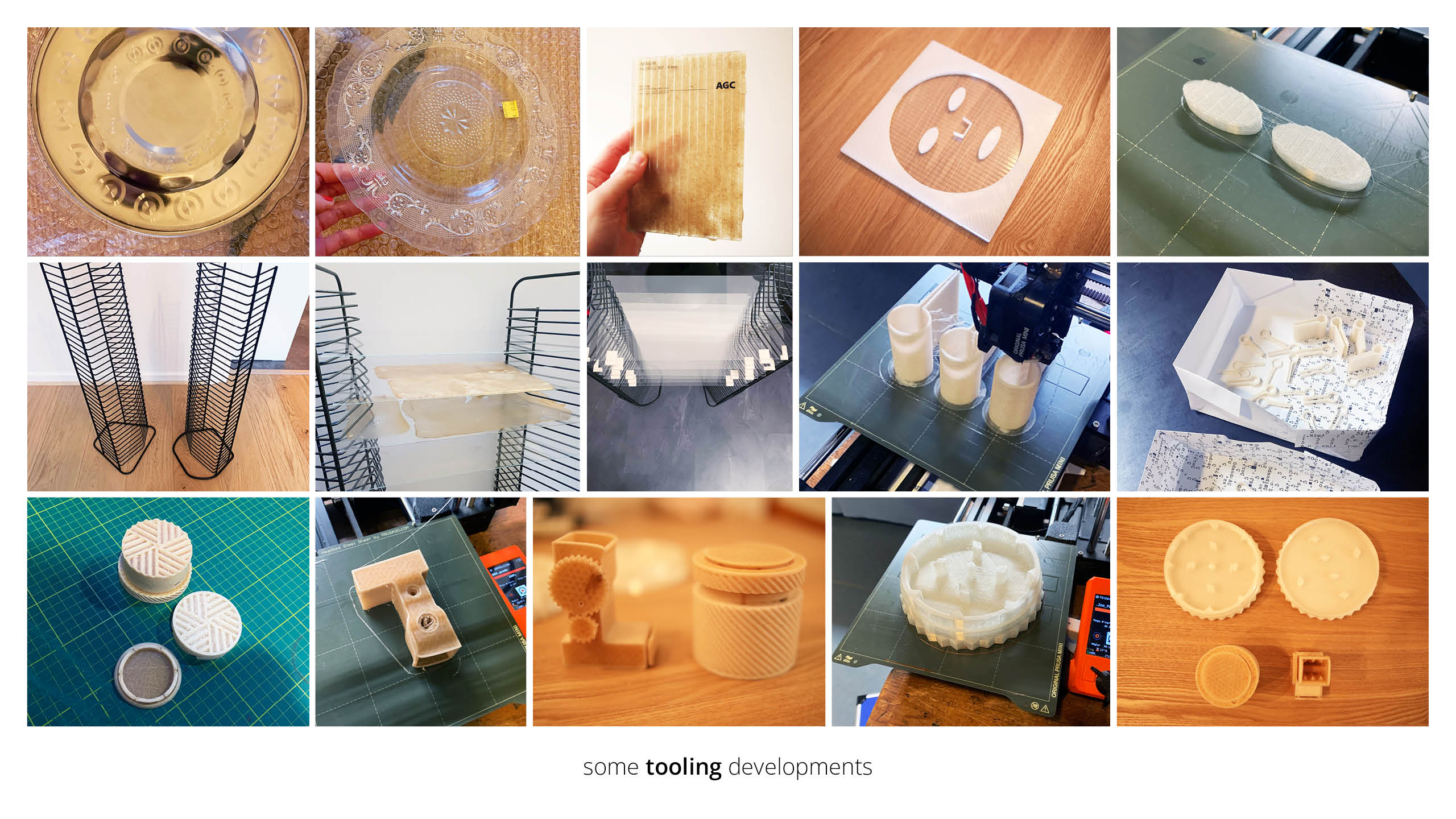
Design & Fabrication¶
-
I started my patterning & molding tests by re-drawing a face mask from an existing one. I folded it in half, as for a sewing modeling process, to be sure of the final symmetry. Then I measured its dimensions, simplified it, and redrew it on Illustrator.
-
I then exported my vector drawing in DXF, and opened it on Rhinoceros 3D. I developed the free areas (eyes, nose, mouth, borders) in 3D on Rhino, and tested some 3D models of eyes patches too in parallel of the face masks.
Tip
I explained the process of 3D modeling on Rhino from 2D Illustrator patterns during my week 07, dedicated to the Computational Couture theme.

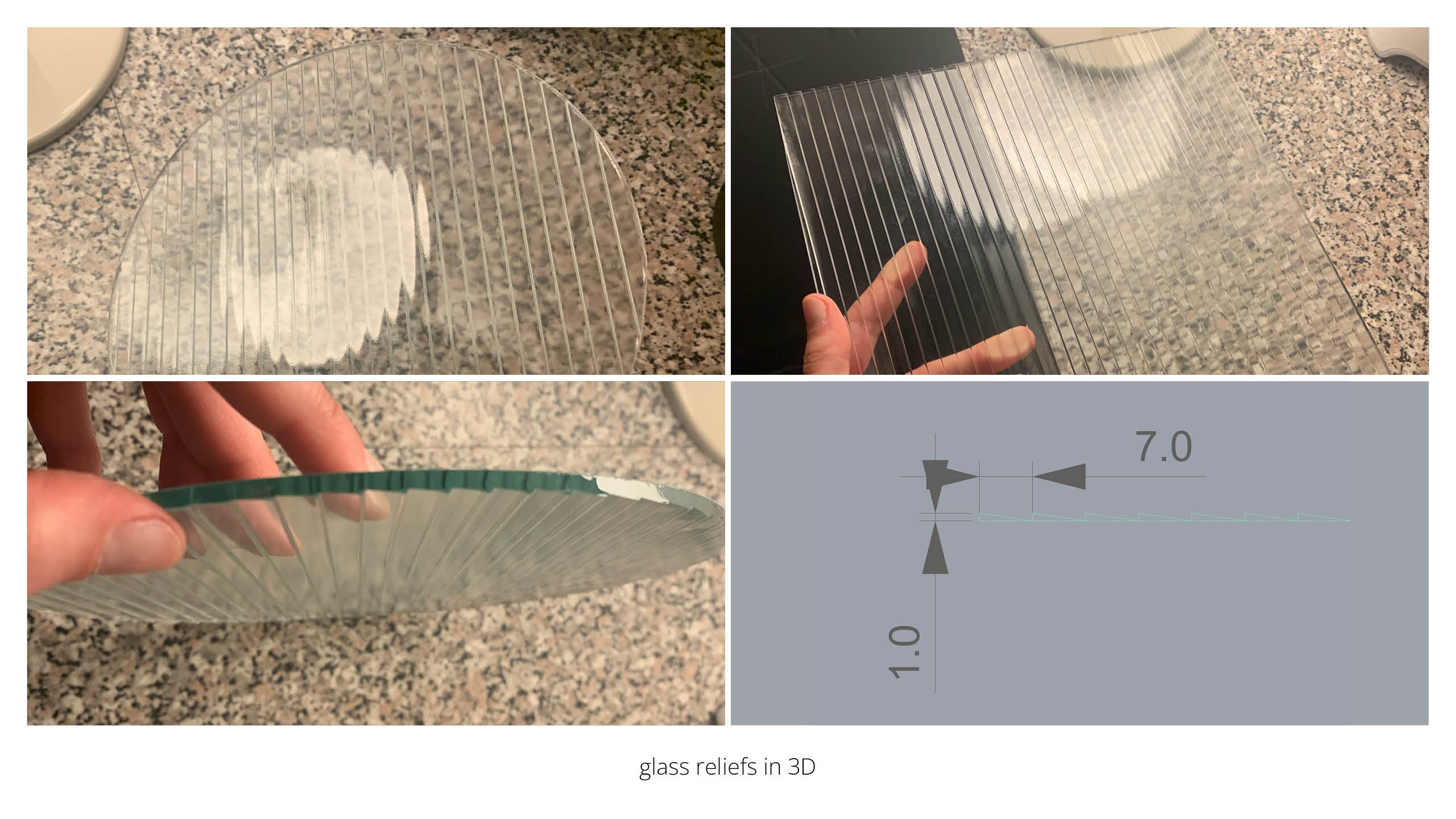
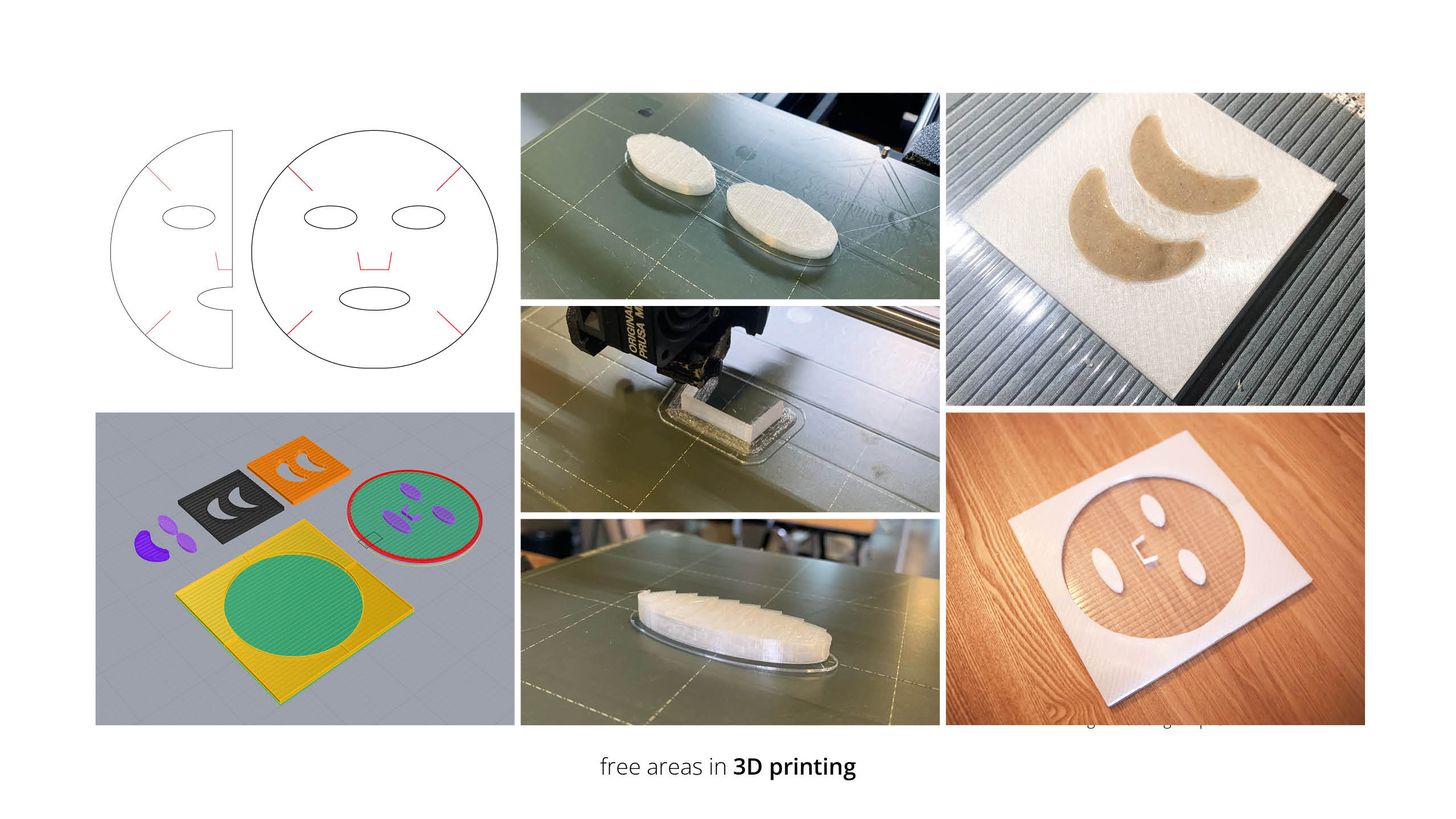
Prototypes¶
- After selecting Agar, I did different tests of foil thicknesses, relief imprints & BSG thickness and ratio in the foil composition. As explained in the recipe, the thinner foil is the better to keep a good stretch resistance, and it is also important to wait a long time (approx. 30-40mn) after boiling the mix, to insure that Agar will react to the temperature transition during the cooling.
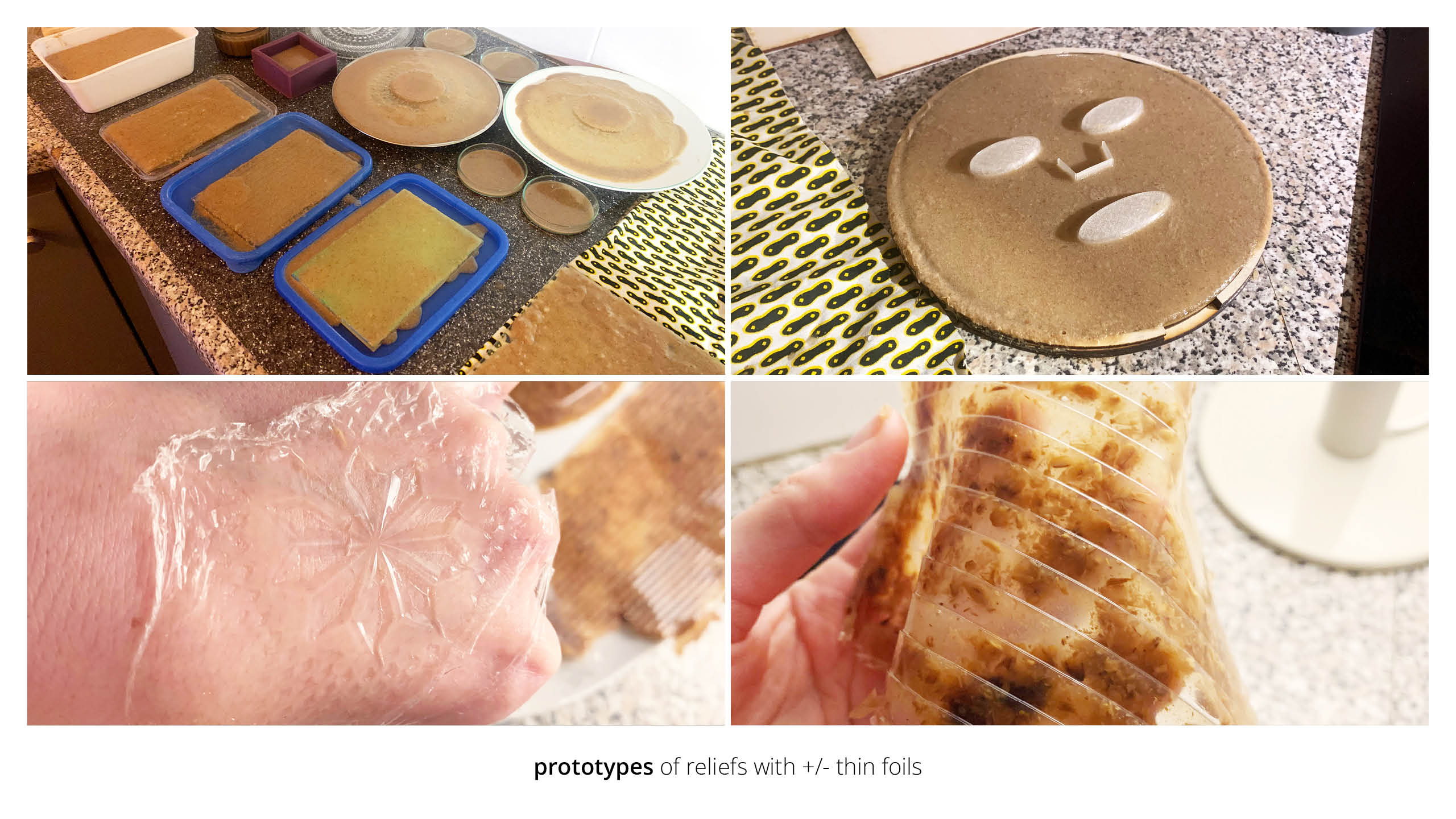
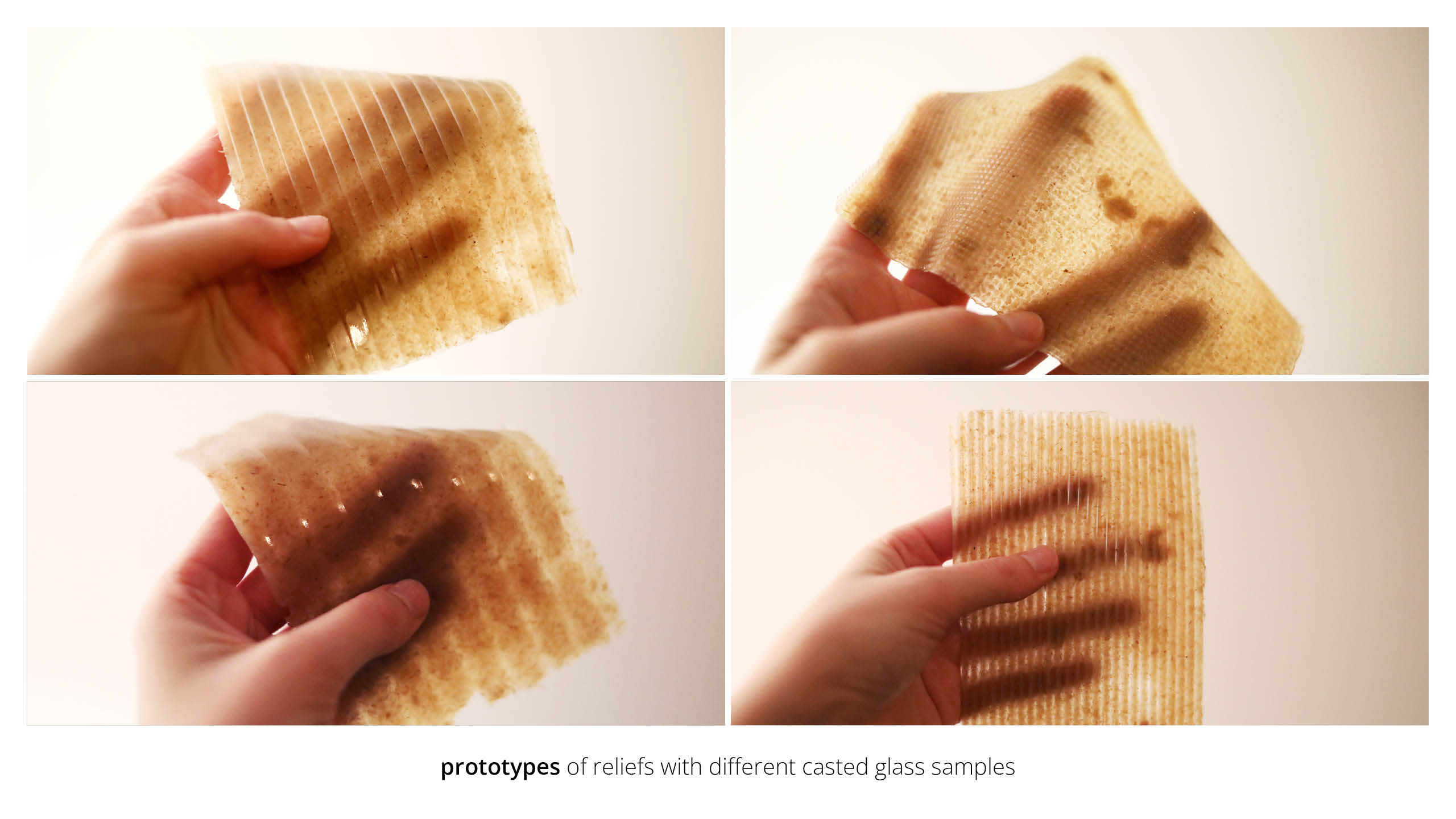
Tip
I used flat casted glass molds cutted by a contact at Eurover, a glass manufacturer close to Brussels. And samples from them library, of AGC products.
Mentoring notes¶
-
Define/select something between beer & cider waste, develop researchs to clarify
-
Packaging application could be great (directly related to beer bottles and lifecycle, ecological issue ++) but maybe not so relevant in term of economical / practical solution for small producers
-
Beauty application seems very interesting & relevant - as well as using of Agar instead of Gelatin
-
You seems very interested in process rather than product, it might be great to see one process at the end of the project and other process later
-
Some project references (e.g Remix El Barrio)
get inspired!
These references are available in a open Miro board with other weeks inspirations : INSPIRATIONS
And the project steps are here : DEVELOPMENT
Half-fabrication files¶
Here are the STL documents realised for FDM 3D printing :
I used virgin PLA from Francofil, and the Prusa Mini machine at Green Fabric for 3D printing. Here are the GCODE files :
Here are the 2D patterns files :